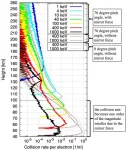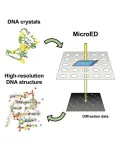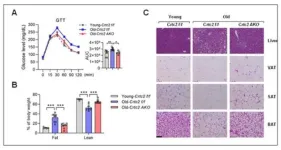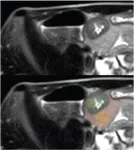(Press-News.org)
In a study published today in Cell, one of the most prominent peer-reviewed scientific journals in the field of Biochemistry & Molecular Biology, scientists from the National University of Singapore (NUS) and Imperial College London have discovered a new way by which bacteria transmit their genes, enabling them to evolve much faster than previously understood. Led by Assistant Professor John Chen from the Department of Microbiology and Immunology and the Infectious Diseases Translational Research Programme at the NUS Yong Loo Lin School of Medicine (NUS Medicine), the insights could help scientists to better understand how pathogenic bacteria evolve and become increasingly virulent and resistant to antibiotics.
The ability to share genetic material is the major driver of microbial evolution because it can transform a benign bacterium into a deadly pathogen in an instant. Phages, the viruses of bacteria, can act as conduits that allow genes to transfer from one bacterium to another by a process known as genetic transduction. Currently, there are three known mechanisms of transduction: generalised, specialised, and lateral. Lateral transduction was also discovered by the same groups of researchers in 2018, and it is at least one thousand times more efficient than the next most powerful mechanism, generalised transduction.
The new process is termed lateral cotransduction, and the architects behind this new frequency and speed in bacterial evolution are the Staphylococcus aureus pathogenicity islands (SaPIs), which are selfish DNA elements that exploit and parasitise phages and are commonly found integrated into the chromosomes of S. aureus isolates. S. aureus is a type of bacteria that can cause Staph infections in humans and animals. While it primarily manifests as skin infections, it can become life-threatening if it spreads to the bloodstream and infects organs, bones, or joints.
Professor José R. Penadés from the Department of Infectious Diseases, and Director for the Centre for Bacterial Resistance Biology at Imperial College London, said, “This breakthrough sheds light on a novel pathway through which bacteria evolve. Given the alarming surge of antibiotic-resistant superbugs, comprehending the mechanisms driving bacterial evolution becomes increasingly critical.”
This newly discovered process, lateral cotransduction, rivals lateral transduction in terms of efficiency but surpasses the latter in versatility and complexity. While lateral transduction is only known to occur when dormant phages within bacterial genomes become reactivated and initiate reproduction in the lytic cycle, lateral cotransduction can occur during the reactivation process and the infection of new bacterial cells.
Additionally, unlike phages that sacrifice their genes to transmit bacterial host DNA, SaPIs can transfer themselves completely intact with bacterial DNA through lateral cotransduction. This remarkable capability enables them to perpetually repeat the process, making them significantly more potent and efficient in transmitting bacterial genes.
Asst Prof Chen said, “Through the study, we have demonstrated that bacteria can evolve much faster than we understood. While genetic transduction has always been the exclusive domain of phages, in an unexpected twist of irony, our research has shown that parasites of the most prolific parasites on the planet (the phages) are probably the most powerful and efficient transducing agents currently known.”
Prof Chng Wee Joo, Vice-Dean (Research) at NUS Medicine, said, “This groundbreaking discovery will impact the way we understand how bacteria evolves through gene transfer, and their potential implications on bacterial infections and diseases. This research is also paramount in informing safe treatment decisions in clinical settings, and it is an absolute honour to have our work published in this prestigious journal.”
The rise of superbugs has called for new ways to treat antibiotic-resistant strains. One such method that has gained traction in recent years is phage therapy, which involves the use of phages to eliminate harmful bacteria in infections and diseases. However, instead of just fighting bacteria, some therapeutic phages could turn out to be the unwitting accomplices of SaPIs or other related elements capable of lateral cotransduction.
According to Prof Penadés, "This process likely occurs in various other bacterial species as well. This groundbreaking finding marks a paradigm shift in our understanding of bacterial evolution and will immensely influence the ways we combat antibiotic resistance.”
“They (phages) could be used to destroy bacteria in the short term but end up spreading harmful genes to other cells in the long term, which could prove to be disastrous. With this new way of understanding the evolutionary mechanisms of disease-causing organisms, it is important for therapeutic phages to be carefully vetted before they are used for therapy,” said Asst Prof Chen.
END
Understanding the ionosphere high in the Earth's atmosphere is important due to its effects on communications systems, satellites and crucial chemical features including the ozone layer. New insights into the activity of high energy electrons have come from a simulation study led by geophysicist Yuto Katoh at Tohoku University, reported in the journal Earth, Planets and Space.
"Our results clarify the unexpected role of the geomagnetic field surrounding the Earth in protecting the atmosphere from high energy electrons," says Katoh.
The ionosphere is a wide region between roughly ...
Function and form are deeply intertwined in biology. Knowing how organisms grow, adapt and reproduce requires understanding their physical structures. Hence the transformative power of the microscope across the past four centuries of science.
Microscopy, or the field of microscope use, can now reveal the tiniest of structures through techniques such as microcrystal electron diffraction, or MicroED. Instead of passing light through a cell like an optical microscope, MicroED bombards crystalline samples with a stream of electrons to produce detailed information about their atomic configuration.
“The method was developed ...
Korean researchers have unveiled a novel signaling pathway that fosters aging-related chronic metabolic disorders.
A research team led by Professor Jong Kyoung Kim from the Department of Life Sciences at POSTECH along with Professor Seung-Hoi Koo from the Division of Life Sciences at Korea University and principal researcher Geum-Sook Hwang from Korea Basic Science Institute (KBSI) announced the discovery of a new mechanism where BCAA metabolic pathway becomes impaired due to aging, resulting in dysfunctions of adipose cells and chronic metabolic disorders. The research findings were published in Nature Aging (IF=16.6) ...
Leesburg, VA, August 4, 2023—An accepted manuscript published in the American Journal of Roentgenology (AJR) found that deploying a radiomic-based model with T2-weighted MRI data could increase diagnostic accuracy for pediatric Crohn disease (CD).
Noting that ileal-wall radiomic features were strongly predictive of CD—and that model performance improved when ensembled with clinical data—“a radiomic machine learning model predicted CD diagnosis with better performance than two of three expert radiologists,” wrote corresponding author and AJR Pediatric Imaging Section Editor Jonathan R. Dillman, MD, MSc.
Dillman et al.’s manuscript ...
Childhood trauma, such as abuse, emotional neglect, and exposure to domestic violence, may heighten a woman’s subsequent risk of pregnancy complications, and of giving birth to a low birthweight or premature baby, finds a pooled data analysis of the available evidence, published in the open access journal BMJ Open.
The risks of pregnancy related diabetes, high blood pressure, depression/anxiety and of giving birth to underweight and or premature babies may all be significantly higher, the analysis suggests.
While previously ...
The use of essential peppermint oil aromatherapy may ease pain severity after open heart surgery and enhance sleep quality as well, suggest the results of a small comparative clinical trial, published online in the journal BMJ Supportive & Palliative Care.
Heart surgery is a major procedure, necessitating the separation of the breastbone (sternum) as well as mechanical breathing support, both of which are associated with a high risk of severe pain, stress, and sleeplessness, note the researchers.
Effective pain relief allows patients to recover more quickly and may reduce the risk of postoperative complications, ...
SEATTLE, Wash. August 3, 2023 – An analysis of 19 causes of death in the United States revealed persistent disparities and a familiar pattern across five racial-ethnic groups and 3,110 counties from 2000 to 2019. That’s according to the most comprehensive peer-reviewed research published today in The Lancet.
The mortality rates among American Indian or Alaska Native (AIAN) and Black populations were substantially higher than among White populations nationally and in most counties. For example, mortality was higher among the AIAN population than the White population in nearly all counties for skin and ...
As little as 25 minutes a day of slow walking seems to be enough to counter the detrimental physical effects of bedrest on older hospital patients, finds a pooled data analysis of the available evidence, published online in the British Journal of Sports Medicine.
And for optimal improvements in physical function, around 50 mins/day of slow walking or around 40 mins of combined physical activities, such as 20 mins of resistance bands with around 20 mins of aerobic activity, are the most effective, the analysis indicates.
But there may be a threshold effect, with no clear benefit for ‘doses’ of more than 90 mins/day ...
An international team of scientists have discovered an unusual Jupiter-sized planet orbiting a low-mass star called TOI-4860, located in the Corvus constellation.
The newly discovered gas giant, named TOI-4860 b, is an unusual planet for two reasons: stars of such low mass are not expected to host planets like Jupiter, and the planet appears to be particularly enriched by heavy elements.
The study, led by University of Birmingham astronomers, is published today (Friday 4th August) in a letter published within the Monthly Notices of the Royal Astronomical Society.
The planet was initially identified using NASA’s Transiting Exoplanet ...
Novel blood testing technology being developed by researchers at the Johns Hopkins Kimmel Cancer Center that combines genome-wide sequencing of single molecules of DNA shed from tumors and machine learning may allow earlier detection of lung and other cancers.
The test, called GEMINI (Genome-wide Mutational Incidence for Non-Invasive detection of cancer), looks for changes to DNA throughout the genome. First, a blood sample is collected from a person at risk for developing cancer. Then, cell-free DNA (cfDNA) shed by tumors is extracted from the plasma and sequenced using cost-efficient ...




